REVIEW – It would be ridiculous if they weren’t so useful. I’m referring to the mind-boggling selection of power stations available today. Large, small, and everything in between, power stations deliver juice in spades to our power-hungry gadgets. This review covers the Ugreen PowerRoam 2200 Portable Power Station. It’s big, it’s heavy, it’s powerful and yes, it’s portable—kinda.
What is it?
The Ugreen PowerRoam 2200 is a massive portable power station that can run 99% of appliances (Ugreen’s claim). There are 2400 watts of power and 2048Wh (watt hours) of capacity which explains why Ugreen named it 2200. I can’t figure it out, either.
The Ugreen PowerRoam 2200 Portable Power Station weighs slightly over 56 lbs. It has handles for carrying, so it is portable. But Ugreen has included something to save your back—wheels! Yes, the 2200 comes with what Ugreen calls a trolley. It’s an excellent 4-wheel dolly with a telescoping handle. It handles much like a large, wheeled suitcase.
There are a total of 16 outputs on the 2200: 6 grounded AC outlets, 2 USB-A ports, 4 USB-C ports, a 12V Anderson port, a 12V car charging (cigarette lighter) port, and 2 DC ports. One nice thing about the 2200 is that there are double the USC-C ports to USB-A. It’s about time!
Three inputs on the side panel allow the 2200 to be charged either by an AC wall outlet, a 12V car charging port or dual solar ports. AC wall charging can be achieved in 1.5 hours (0%-100%). Ugreen calls it PowerZip—an appropriate name. Even faster charging is possible using both 600W solar ports—for a total of 1200 watts—requiring 6 200W solar panels—if you live in the desert where it seldom rains. In Florida where I live—not so much. Clouds come and go all the time. Keep in mind that solar panels are expensive.
Specs
- Capacity: 2048Wh (640000mAh 3.2V)
- Lithium battery capacity: 40Ah
- WIFI+Bluetooth App
- Ports: 16
- Recharging:
AC 1200W – 80% charge in 1 hour
Solar charging 400W Max – Fully charged in about 4 hours
Car charging – 3.5 hours - Input:
AC Input – 100-130V
Car Charging – Supports 12V/24V battery
Solar Charging – Single port 600W Max; dual port 1200W Max - Output:
AC – 2200W Max
USB – A x 2
USB – C x 4
Anderson – 300W Max
DC5521 x 2
AC x 6
Car Charging - Total Output – 2500W Max
Design and features
Looking at the Ugreen PowerRoam 2200 Portable Power Station gives the impression of an all-business unit with some useful and clever touches thrown in.
Despite its weight, Ugreen built in two large handles on each end for easier carrying—especially using two people. I can lift it myself, but only to place it on the included trolley. It locks in place via a clever dual-snapping mechanism that’s part of the retractable handle. It’s also easy to detach those same locks for lifting out of the trolley when necessary.
There are a ridiculous—in a good way—amount of outlets and ports on the 2200. One end has six (!) 120V (US) outlets. That’s more than I will probably ever use, but it’s good to know they’re there.
The opposite end of the 2200 contains some interesting stuff. There’s a screw called “Protective Earth” and an “Overcharge Protection” button. There’s a charging port for connecting to a standard wall outlet. Two solar outlets rated at 600 watts each can provide up to 1200 watts of charging—if you have the solar panels to support it. That’s fast! Finally, there is an unusually-shaped plug port for the expansion batteries (cable not included).
The front panel also has a more than decent amount of ports. One thing I appreciate is that there are more USB-C than USB-A ports. Finally! There are four USB-C ports at different wattages depending on your needs—140W, 100W, and two 45W. Both the USB-A ports are 22.5W. Other ports on the front panel include a 12V/300W Anderson port (for high voltage continuous power), and dual multi-use 12V ports that sit below a 12V car (cigarette lighter) port.
The front panel also includes a light. The light is small for the 2200’s size. I can’t help but think that it makes the 2200 the world’s heaviest flashlight (the manual even calls it a flashlight). There are two brightness levels, a fast flash, and an SOS flash as well. I can envision using the SOS light in an emergency, but don’t see the need for the flashlight part.
The Ugreen PowerRoam 2200 Portable Power Station snuggly fits into its trolly. The plastic wheels sit inside metal covers with metal axles. One wheel has a locking mechanism to keep it in place. The wheels have a thick tread allowing the 2200 to be rolled over rough ground you might encounter when camping. I rolled it from my backyard studio building to the house (100+ feet) over an uneven lawn, a deck ramp, door jams, and tile. The 2200 acted much like a (very) heavy suitcase.
One of the advantages of the 2200 is the ability to attach up to five 2kW expansion batteries (sold separately) that can be daisy-chained for up to 12kW of available power! The expansion batteries slot nicely into the top of the 2200 to help prevent sliding off. Note that I don’t have an expansion battery to test with, so I can only repeat what Ugreen states.
The expansion batteries require a lot of cash outlay but if you need to power something really big, you would be covered. As it though, the 2200’s 2400 watts will cover most needs during those occasional outages that strike all of us from time to time. Power stations are practically a necessity in Florida (where I live) and its periodic hurricanes.
So how long will the Ugreen PowerRoam 2200 Portable Power Station last? That depends. There are 2048 watt hours rated for the unit. For simplicity’s sake, let’s round the number down to 2000Wh. A typical portable room heater requires 1500 watts. Let’s do the math. A 2000-watt appliance will run for 1 hour. A 1000-watt appliance will run for 2 hours. So, a 1500-watt appliance will run for 1.5 hours. Note that watt hours can be affected by many things, so these times are approximate.
If power is off for days, a solar panel (or up to six panels) can recharge the 2200. Panels are not included, but the necessary cables are.
In addition to the solar cables and trolley, the 2200 also comes with a water-resistant cover, a pouch for those extra cables, and a metal mesh cover that fits over the fans, helping keep dust out.
The 2200 has fans that are part of its battery management system (BMS) that keeps track of voltage, current, temperature, and other battery parameters in real-time.
Speaking of safety, the UGreen PowerRoam 2200 is made up of lithium iron (LiFePO4) batteries as opposed to lithium-ion batteries. LiFePO4 Batteries are not as flammable as the lithium-ion batteries can be. Plus, they do not use cobalt—a rare but necessary metal that’s mined under questionable, unethical means. LiFePO4 batteries also have an incredibly long recharge cycle life. One cycle is 0%-100%-0%. The 2200 has 3000 rated cycles—over 8 years if drained and recharged daily!
Using the Ugreen PowerRoam 2200 Portable Power Station couldn’t be easier. All that needs to be done is plug any device into the unit once charged, and you’re good to go! The DC section has its own power on/off button but the other ports only require the main power button. I plugged my iPad Pro into the 100W USB-C port and it charged from 35% to 100% in about 20 minutes—way faster than my USB wall outlet (rated at a paltry 16 watts). Sometimes I use the Ugreen PowerRoam instead of the wall outlet to get both improved speed and safety since the PowerRoam provides clean power without any surges.
Did I mention there’s an app for this? It’s fairly basic, but cleanly designed, informative, and can do what you want it to do. The app will connect via Wifi or Bluetooth by pressing the IOT button (it’s below the flashlight). Ugreen recommends using Bluetooth, so I followed their suggestion and it worked fine. Note that the app needs to be re-connected each time—and that the IOT button needs to be pressed each time. At least it did on my unit. I’m not sure if that’s a bug or not. It’s a minor inconvenience.
The app goes way beyond what can be controlled on the display, for instance, it will run self-diagnostics for troubleshooting, do the usual firmware updates, and apply many settings that can help the 2200 last longer. When I unboxed the 2200, there was an audible beep to let me know a button was pressed. I didn’t want it to beep and the app let me turn it off.
There’s a weird—but cool—setting that will prevent the batteries from charging beyond 90%. Why would you want to do that? It turns out that batteries will last much longer if they are not charged to 100% every time and not allowed to be depleted to 0%. With the 2200, you can set it and forget it.
What I like
- Extremely useful
- Reasonably priced for its power rating
- Powerful
- Long power usage time
- Shore recharge time
- Useful trolley
- App
- Safer LiFePO4 batteries
What I’d change
- Heavy
Final Thoughts
If you’re a homeowner who lives in an area that experiences blackouts from storms or a less-than-reliable grid, I recommend at least one large and one mid-sized power station, budget permitting.
The Ugreen PowerRoam 2200 Portable Power Station can save a freezer full of valuable food or just keep the kitchen fridge running for 12 hours—something I’ve done a few times during a hurricane’s aftermath. It will also run up to 6 other appliances—at the same time.
There is more to unpack here than this review covers. I’m not an electrical geek and my thoughts are anecdotal—much as a normal user might experience its day-to-day features. If you’re interested in buying that first power station or adding to what you already have, the UGreen PowerRoam 2200 is a safe, solid choice.
Price: $1,999.00
Where to buy: Ugreen and Amazon
Source: The sample of this product was provided by Ugreen.

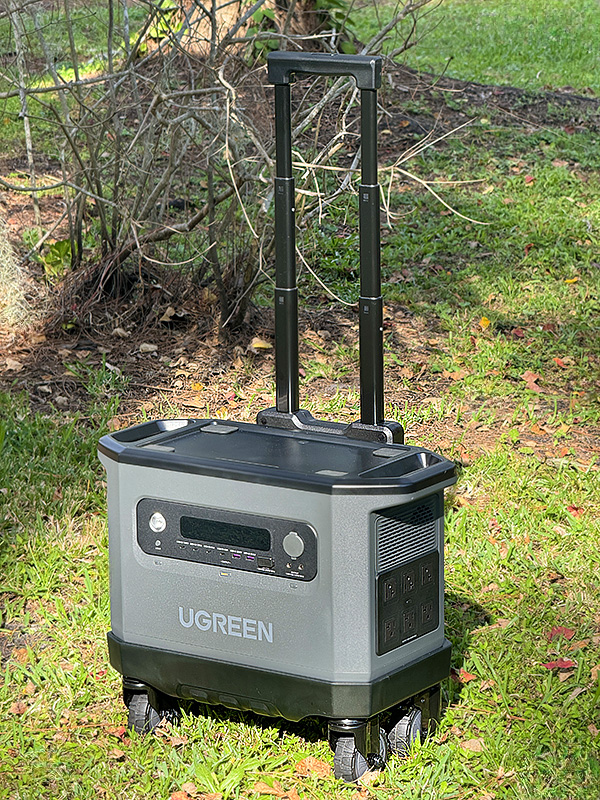
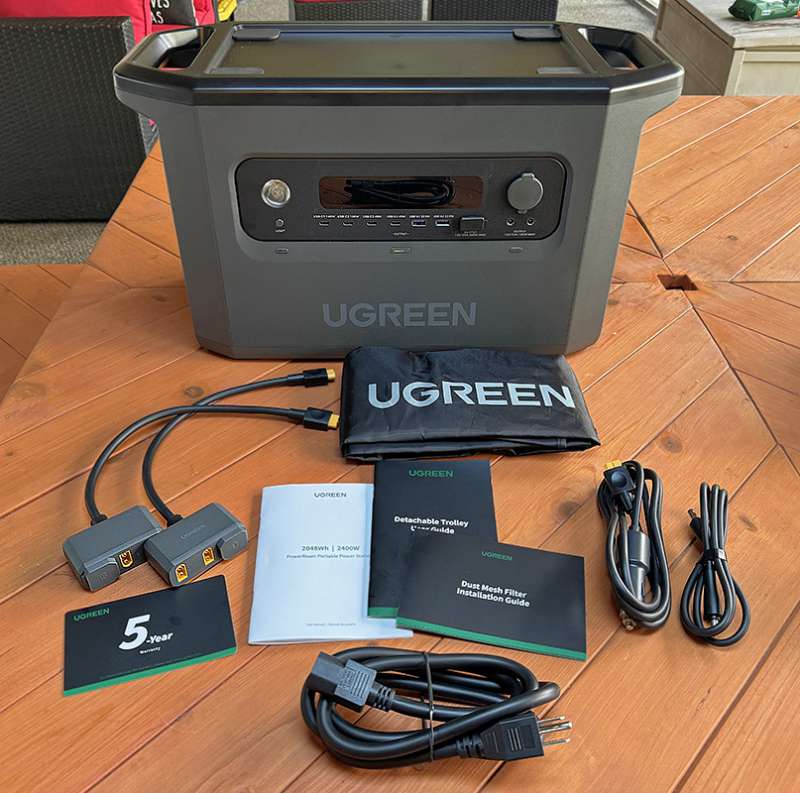
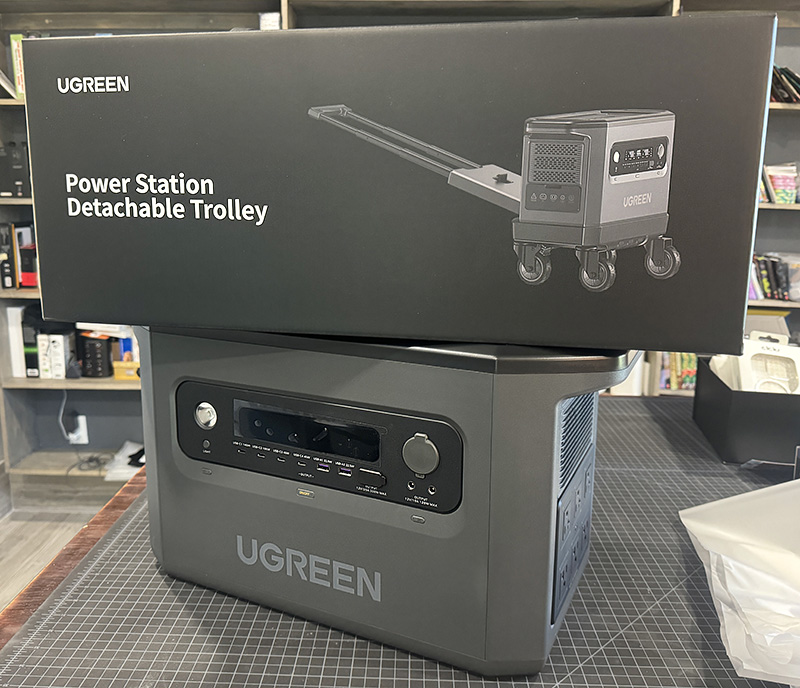

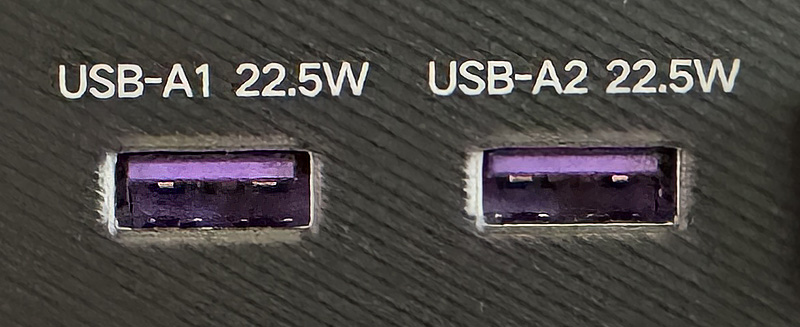
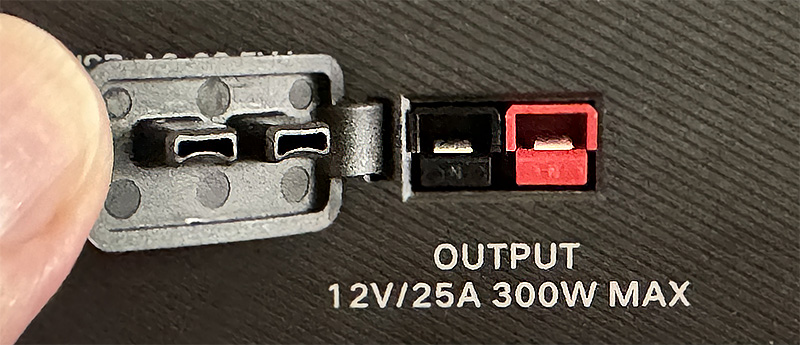
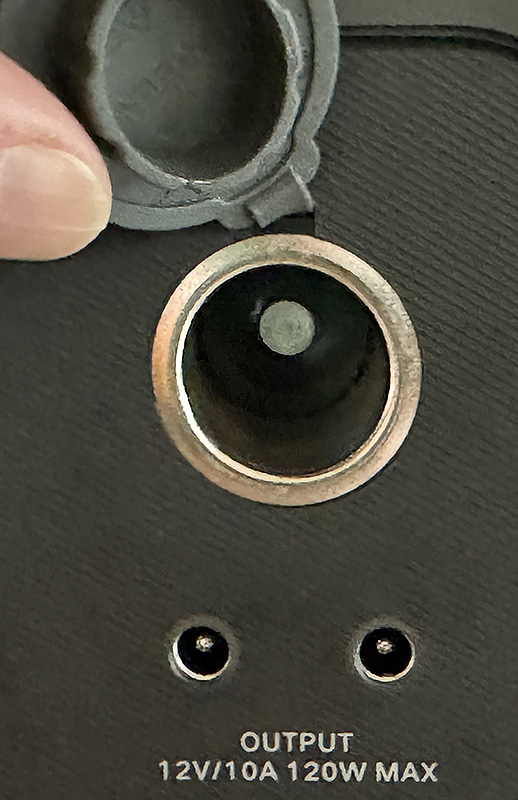
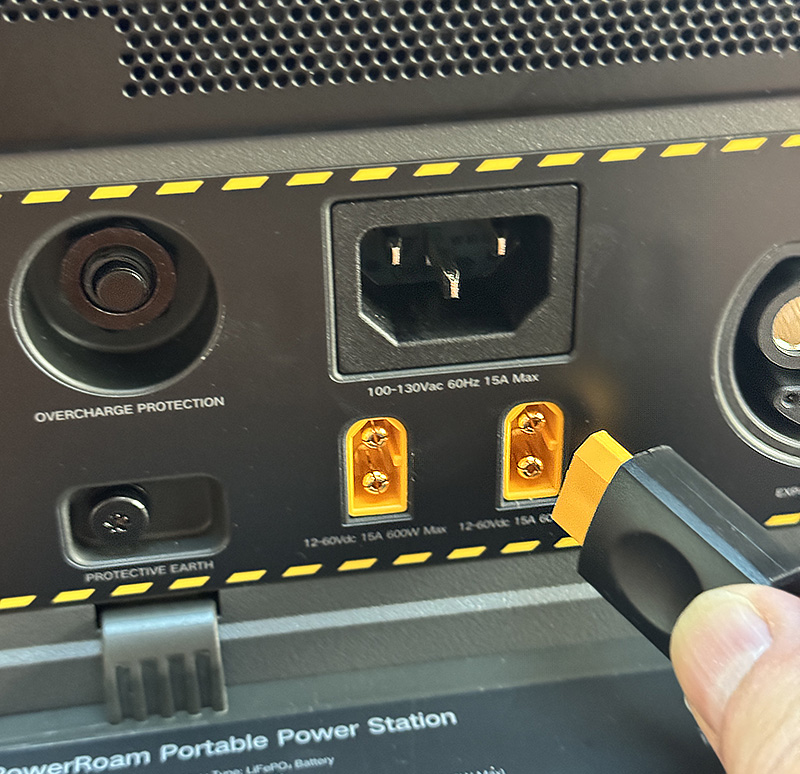
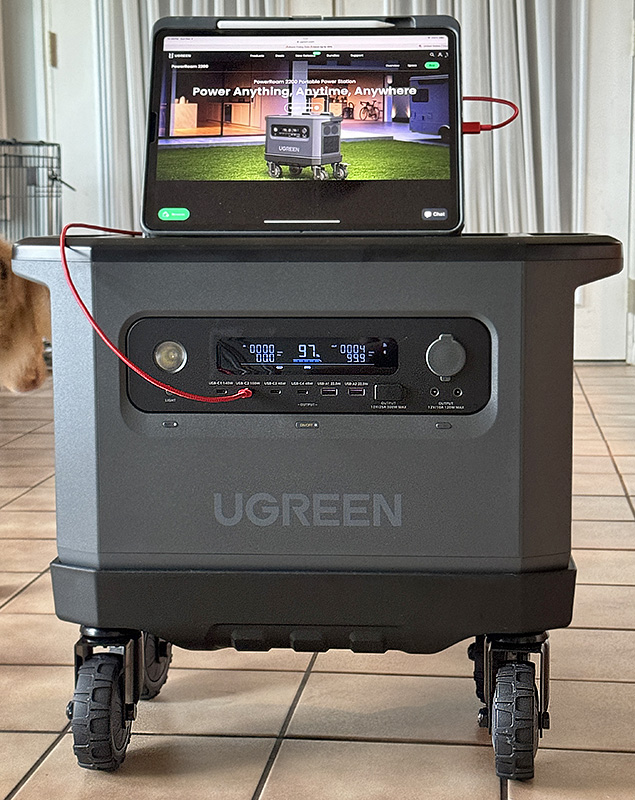
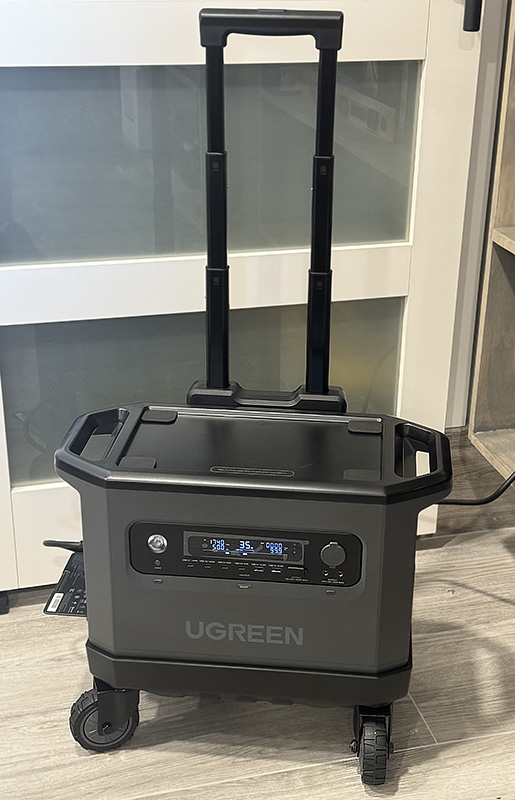
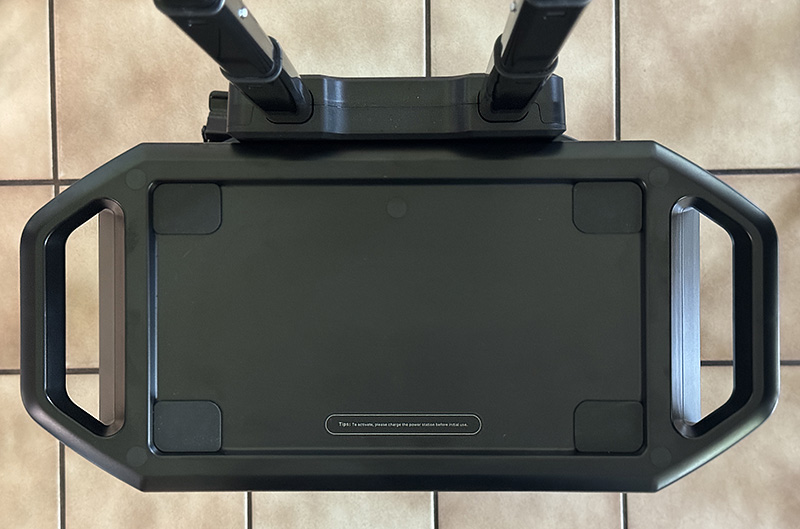
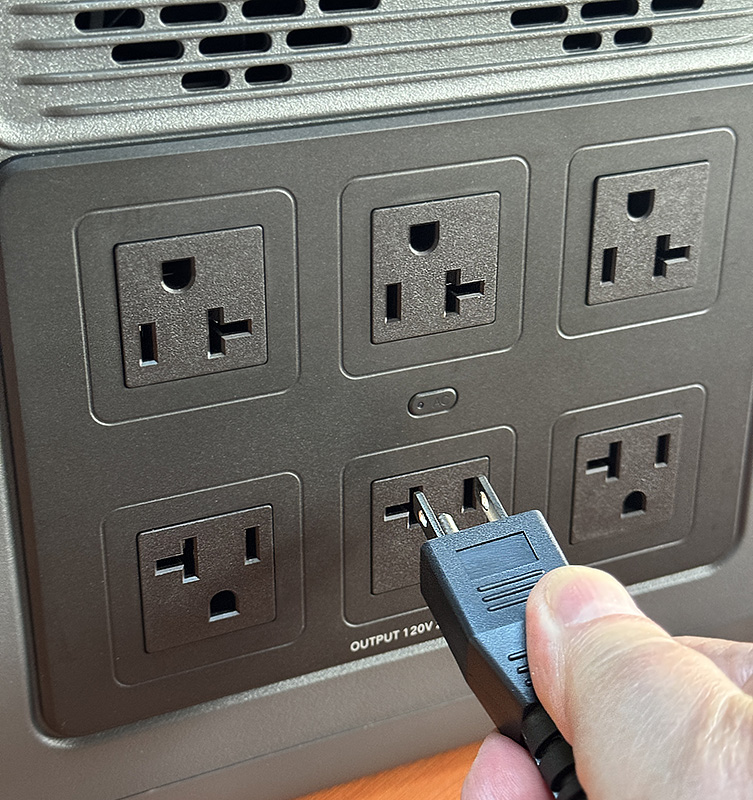
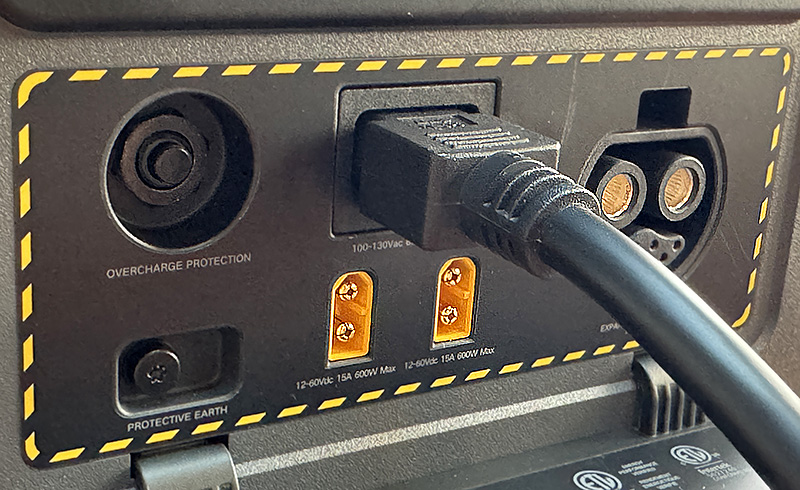
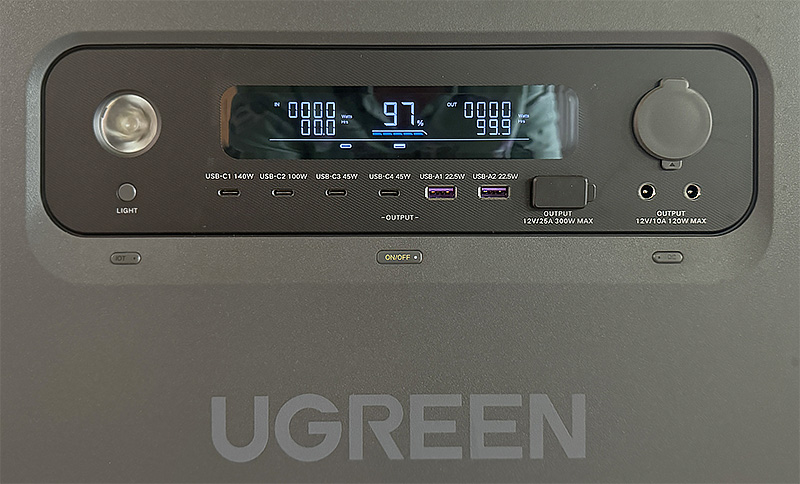

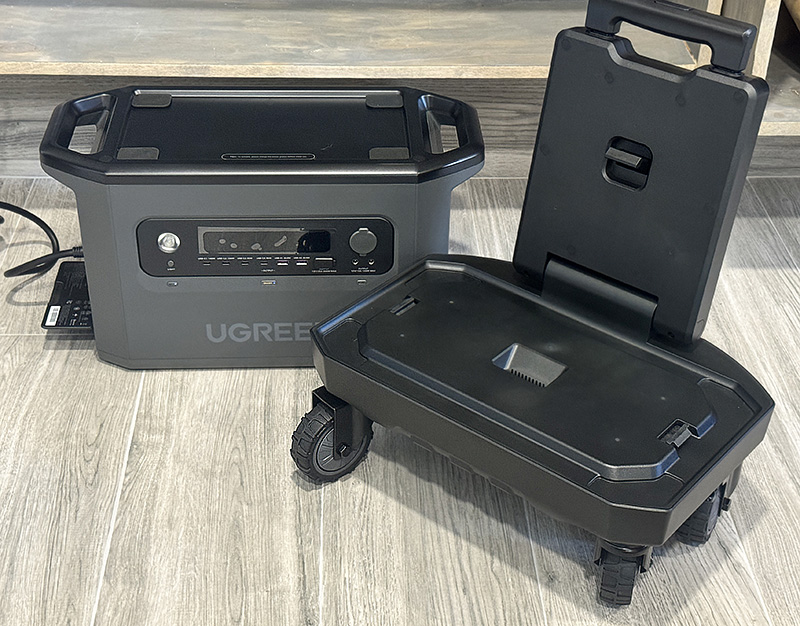
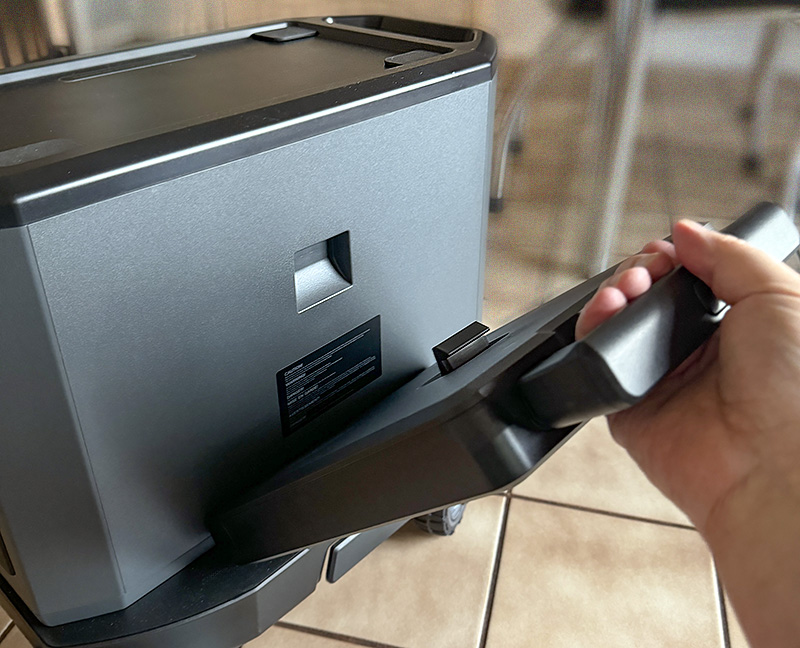
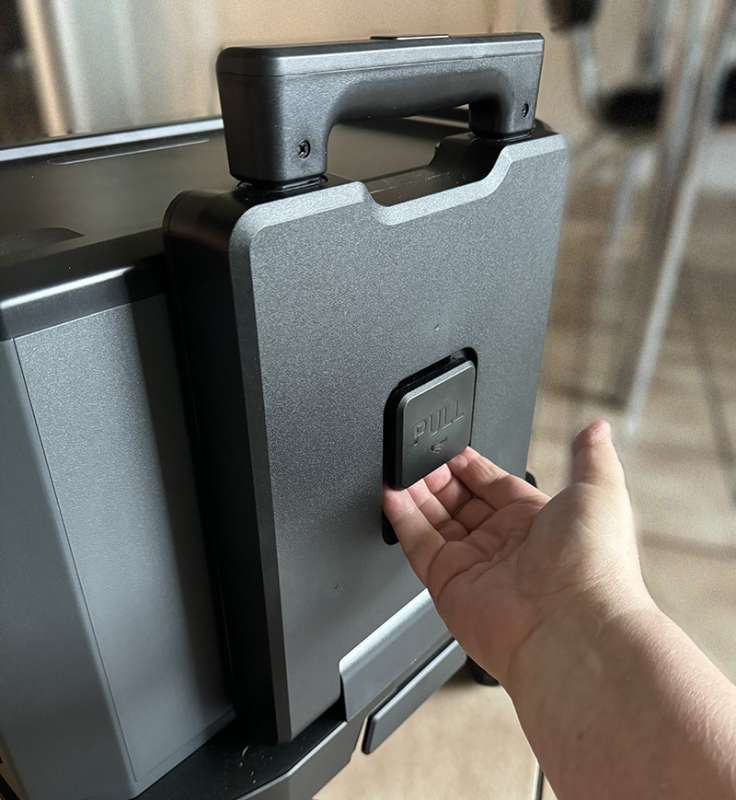
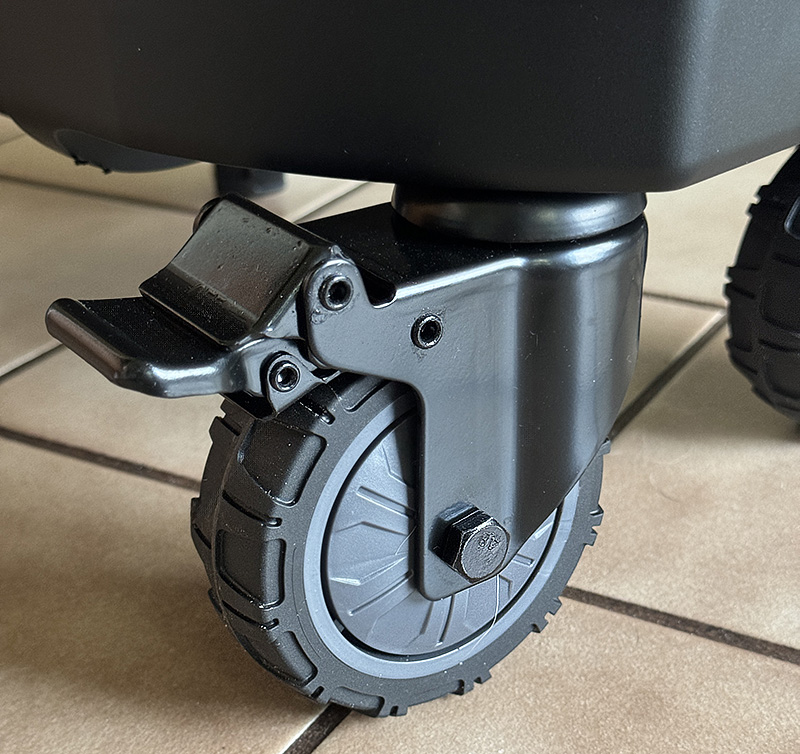
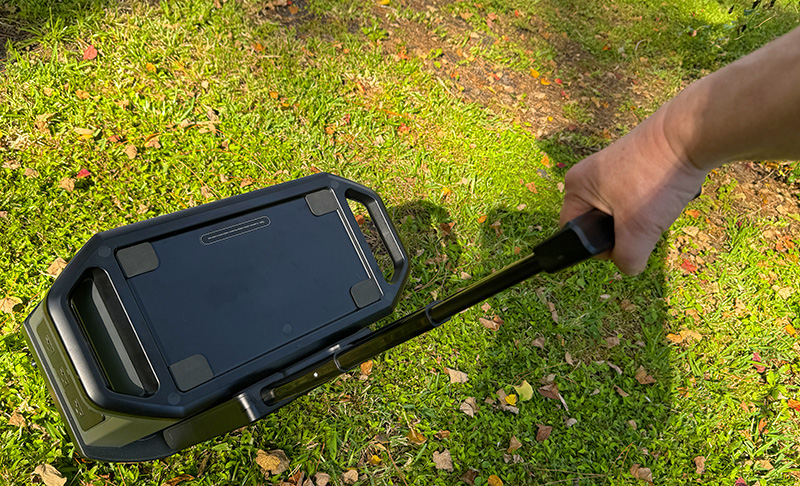
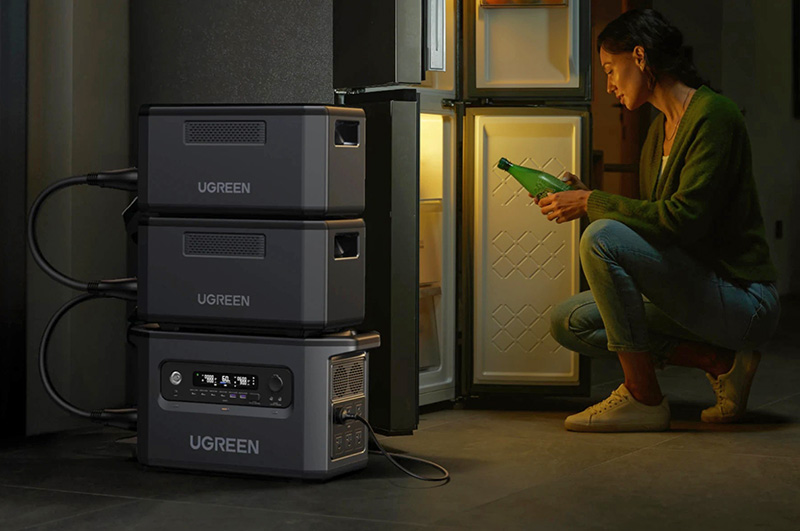
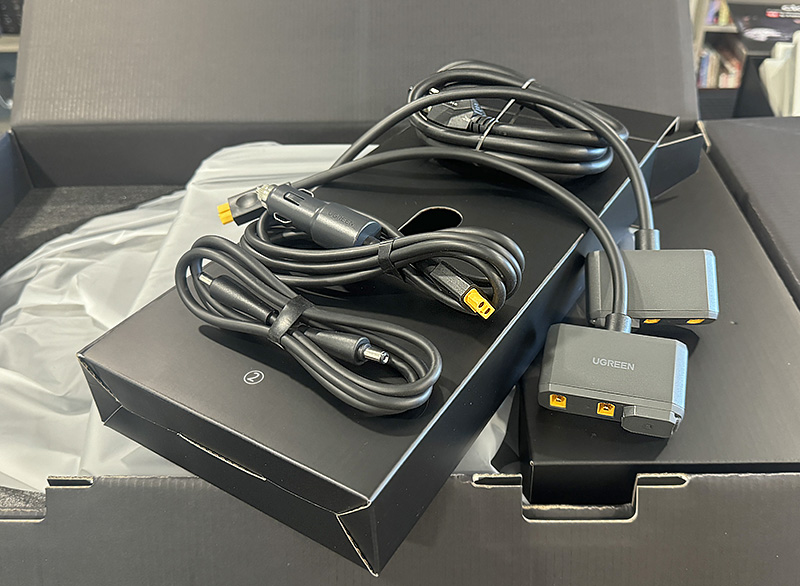
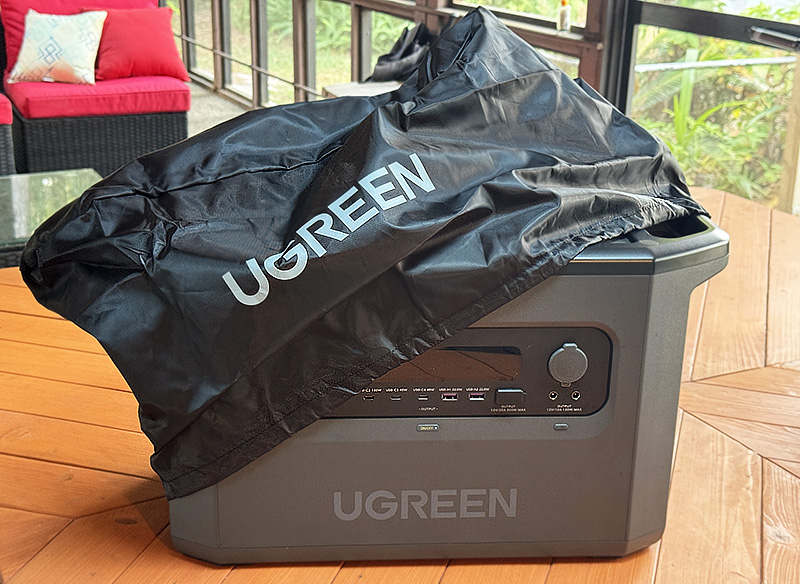
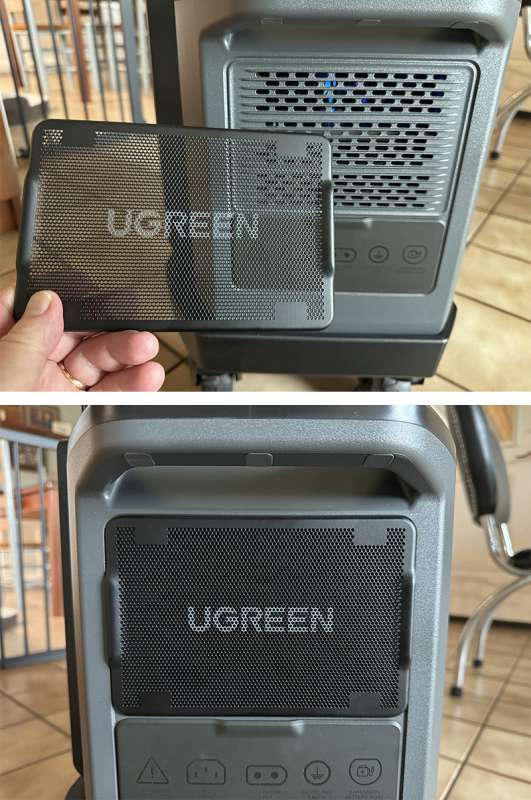
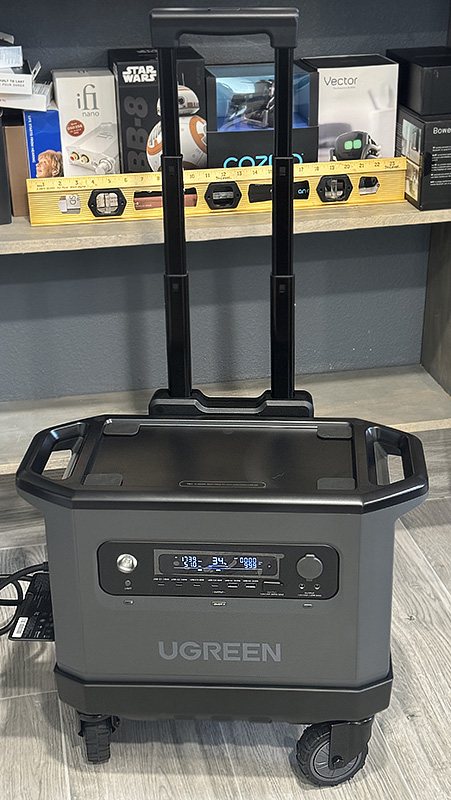
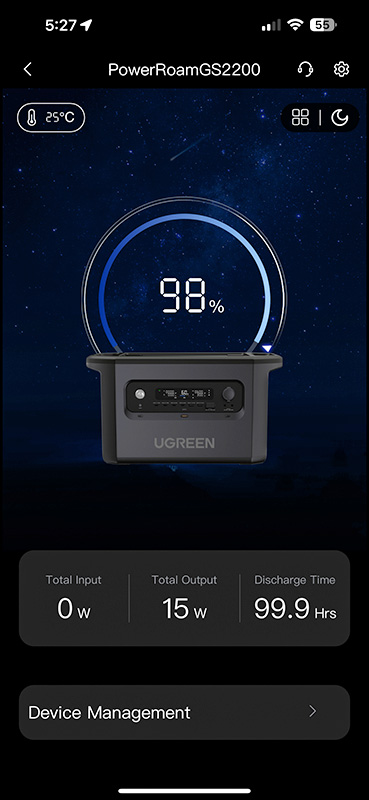
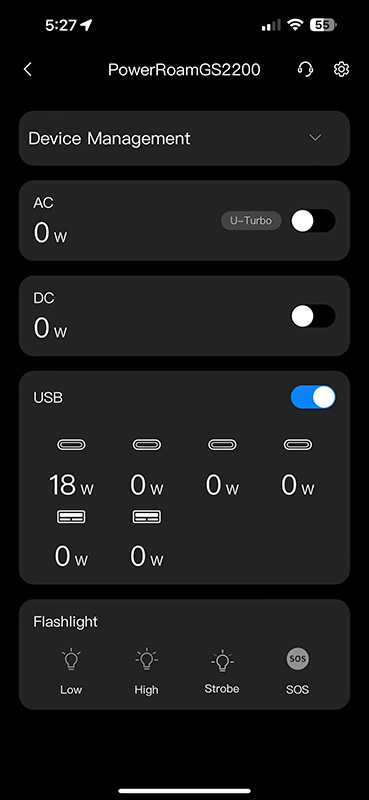

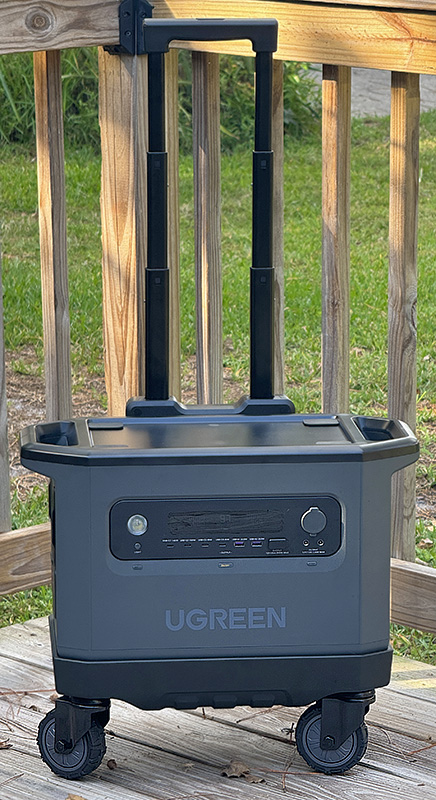


Gadgeteer Comment Policy - Please read before commenting
It’s great that something of use to everyone is being sampled here BUT, NOT EVERY COUNTRY runs on 110v electrical systems, for instance the u.k where I’m from has an 220/240v domestic electrical supply system and as far as I’m aware there’s no way to ramp up 110v to 220v.
Next time how about taking that into consideration, also like many other home owners in the u.k is this type of emergency power supply unit compatible with domestic roof type solar cells and can it be used as a power wall?.